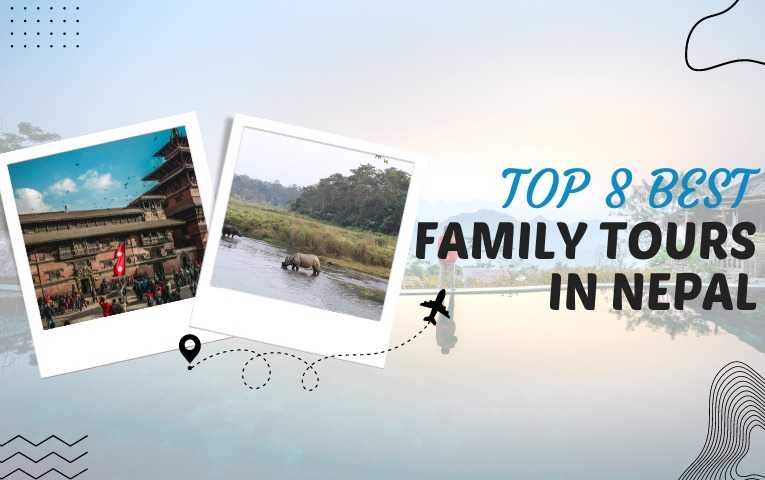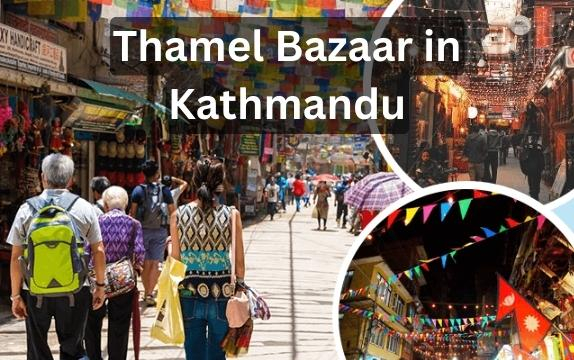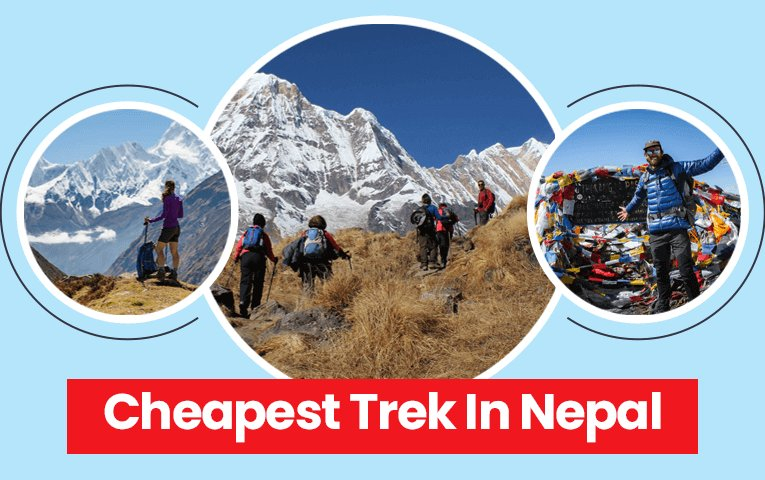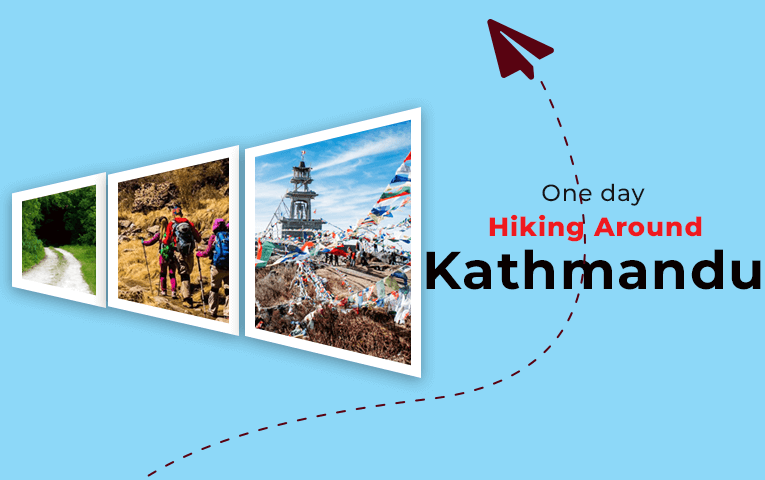Mardi Himal Trek: Itinerary, Cost, Route and Trek difficulty
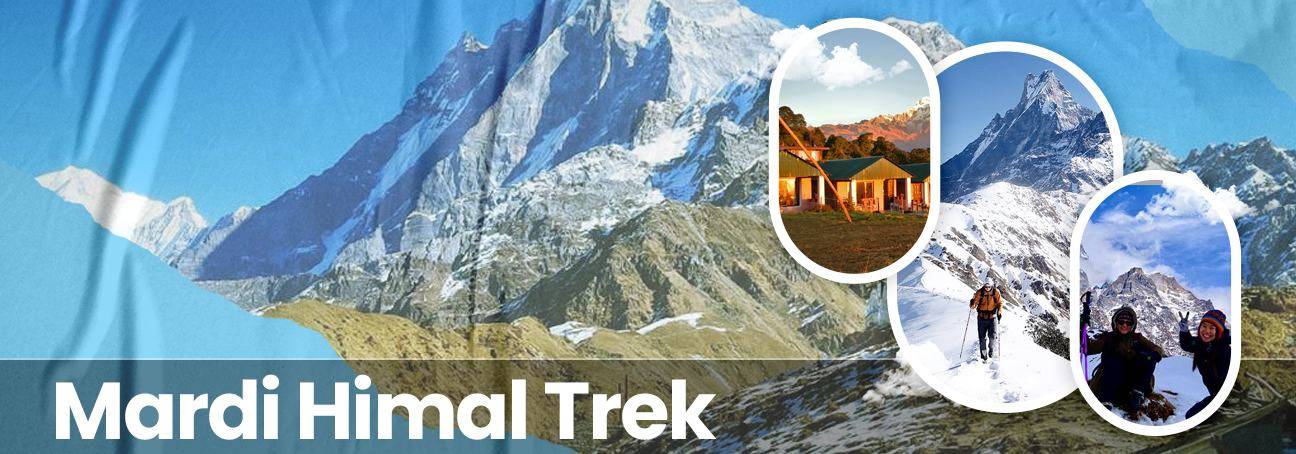
The Mardi Himal Trek, nestled in the Annapurna region of Nepal, offers a captivating journey through some of the most breathtaking landscapes. Situated to the south of the popular Annapurna Base Camp(4130m) trek, Mardi Himal provides a unique and less crowded trekking experience. Over 5-6 days, trekkers can immerse themselves in the scenic beauty, cultural richness, and varied landscapes that this trial has to offer. In this comprehensive guide, we'll take you through the intricate details of a 6-day trek, beginning in the bustling city of Kathmandu and culminating in the breathtaking vistas of Mardi Himal.
Best Routes To Mardi Himal
Embarking on the trek from Pokhara to Mardi Himal unfolds as a captivating journey that spans varying landscapes and altitudes. Starting in Pokhara, adventurers can choose either Kande or Phedi as their trek's entry point, both easily accessible from the city. Covering a distance of approximately 12 kilometers (7.5 miles) from Kande and 20 kilometers (12.4 miles) from Phedi, this trek offers the ideal balance of challenge and accessibility. Traversing through verdant rhododendron forests, picturesque villages, and serene alpine meadows, the route demands a 5 to 7-hour time commitment, depending on the chosen starting point and personal pace. Each leg of the trail, including Forest Camp, Low Camp, and High Camp, boasts breathtaking vistas that will captivate trekkers.
The final stretch to Mardi Himal Base Camp, perched at an altitude of around 4,500 meters (14,764 feet), typically takes 3-4 hours, culminating in a breathtaking finale with sweeping views of the majestic Annapurna and Machapuchare peaks. Encompassing a diverse range of terrain and surrounded by stunning natural beauty, the trek from Pokhara to Mardi Himal is an experience that stays with you long after you've returned home - the perfect fusion of exhilarating adventure and spellbinding scenery.
Best Time for Mardi Himal Trek
Ideal Seasons for Mardi Himal Trek
For the Best Mardi Himal Trek experience, it is recommended to plan your journey during the spring or autumn seasons. Out of the two, the spring season from March to May is esteemed as the prime time to embark on this trek. This time of the year boasts of stable weather, picturesque clear skies, and mild temperatures that are ideal for trekking. The charming rhododendron flowers add a pop of color to the already stunning landscapes. Expect daytime temperatures to vary between 15°C to 20°C (59°F to 68°F), making for optimal trekking weather.
Autumn Magic and Unbeatable Visibility
Consider another ideal option - the autumn season (September to November) boasts breathtakingly blue skies, refreshing cool air, and unbeatable visibility. The post-monsoon season leads to rich, verdant scenery and stunning, unobstructed mountain vistas. With daytime temperatures ranging from 12°C to 20°C (54°F to 68°F), autumn offers a perfect balance of warmth and coolness.
Seasonal Considerations
To ensure a successful and enjoyable Mardi Himal Trek, it's important to avoid the monsoon season (June to August). This time of year brings heavy rainfall, resulting in muddy trails and potential landslides. Similarly, the winter months (December to February) bring frigid temperatures and snow, making the trek more challenging. Ultimately, choosing the ideal time for this trek requires taking into account personal preferences, trekking proficiency, and seasonal conditions. Be sure to always monitor weather forecasts and seek guidance from experienced local guides to stay informed about the current trail conditions as you plan your trekking adventure.
Mardi Himal Trek Cost
There are a few factors to keep in mind when determining the cost of the Mardi Himal Trek. The duration of the trek, mode of transportation, accommodation preferences, and additional expenses are all factors that can affect the overall cost. Let's break it down to help you plan your budget accordingly.
- Permits: First and foremost, you will need to secure permits before embarking on the trek. These include the Annapurna Conservation Area Permit (ACAP) and the Trekkers' Information Management System (TIMS) card, which typically costs between USD 20 to 25.
- Transportation: In terms of transportation, you will need to factor in the cost of getting to and from the trek starting point, which could be either Kande or Phedi. Depending on the mode of transportation chosen, such as buses, private vehicles, or a combination of both, the cost can range from USD 10 to 30. It's important to consider this expense when planning your budget for the trek.
- Guide and Porter Fees: If you're planning on trekking along the trail, it's highly recommended to have a guide and/or porter by your side. For those not familiar with the path, this can be especially helpful. Guide fees usually hover around USD 20 to 30 per day, while porter fees range from USD 15 to 25 per day, covering their accommodation and meals.
- Accommodation: Accommodation options along the trail can vary greatly in cost. Basic tea houses may charge around USD 5 to 10 per night, while more comfortable lodges can cost between USD 20 and 30 per night.
- Meal: As for meals, budget approximately USD 10 to 20 per day for dining at teahouses. Keep in mind that prices may increase at higher altitudes.
- Additional Expenses: In addition to these expenses, it's important to factor in other costs such as snacks, drinks, charging electronic devices, and personal items. These miscellaneous expenses can add an extra USD 10 to 15 per day to your budget
- Equipment Rental: When planning for your Mardi Himal Trek, be aware that there may be extra expenses for equipment rental such as sleeping bags, trekking poles, and down jackets, ranging from $5 to $15 per item per day. Tips: It is also recommended to tip your guides and porters, based on their level of service, with the average amount being $5 to $10 per day.
- Total Estimated Cost: The estimated total cost for this 6-day trek, including permits, transportation, accommodation, meals, and additional expenses, is approximately $700 to $1,500 per person.
Mardi Himal Trek Itinerary
Prepare for an unforgettable 6-day adventure as we reveal the intricacies of a mesmerizing journey from Kathmandu to the breathtaking Annapurna region.
Day 1: Kathmandu to Pokhara
Embark on your exhilarating Mardi Himal Trek journey by traveling from Kathmandu to the charming city of Pokhara. You can choose to enjoy a scenic drive or a short flight to reach this breathtaking destination. Upon arrival, take some time to immerse yourself in the charm of this lakeside city, nestled against the magnificent Annapurna range. This day serves as a perfect introduction to the adventure that awaits you on the trek.
Day 2: Pokhara to Kande, Trek to Pothana or Deurali
Set off on your adventure towards the trailhead, taking a scenic drive from Pokhara to Kande (approximately 1-2 hours). Once at Kande, begin your trek and immerse yourself in the beautiful forests and charming villages along the way. You have the freedom to choose your desired stop for the day, whether it be at Pothana or Deurali, where teahouses await to provide a comfortable overnight stay amidst the Himalayan landscapes.
Day 3: Deurali to Forest Camp
As you continue on the trek, explore the path from Deurali to Forest Camp, also known as Kokar. Transverse through enchanting rhododendron forests, fully immersing yourself in the awe-inspiring surroundings that define this leg of the journey. The day's expedition culminates in Forest Camp, providing a peaceful setting and a cozy teahouse for a restful night's rest.
Day 4: Forest Camp to Low Camp
As you continue on your journey from Forest Camp, you'll make your way to Low Camp where the scenery transforms into a breathtaking alpine landscape. As you take in the expansive views of Machapuchare and the Annapurna range, you'll also have the opportunity to rest and relax in the cozy teahouse accommodations of Low Camp. This day's trek provides not just a change of scenery, but also a meaningful connection with the stunning Himalayan surroundings.
Day 5: Low Camp to High Camp
Continue your way from Low Camp to High Camp, and prepare to be mesmerized by the evolving scenery. Let the breathtaking beauty of Mardi Himal envelop you as you bask in the splendor of the mountains. At High Camp, the sanctuary of your journey, take a moment to fully soak in the magnificence of your surroundings. And when it's time to rest for the night, nothing compares to the tranquil haven of a teahouse at this elevated camp.
Day 6: High Camp to Mardi Himal Base Camp and back to Low Camp
Begin your day with an exhilarating trek to Mardi Himal Base Camp as the sun begins to rise, revealing the breathtaking beauty of the Himalayas. Head back to High Camp to enjoy a satisfying breakfast before embarking on your descent towards Low Camp. Take in the stunning views once more before reaching Siding Village, and completing your trek. Finally, return to either Pokhara or Kathmandu, reflecting on an unforgettable adventure.
And for those starting from Pokhara, a 4-day excursion is more than sufficient.
What makes the Mardi Himal Trek Difficult?
Some of the challenges of the Mardi Himal trek are:
- Altitude: The altitude of Mardi Himal Base Camp, reaching 4,500 meters, presents potential challenges related to high altitude.
- Unpredictable Weather: Unpredictable weather patterns, such as sudden snowfall and rainfall, demand a state of preparedness.
- Trail Conditions: The trekking trail presents uneven and rocky terrain, with chances of encountering muddy and slippery sections.
- Limited Facilities: Accommodations along the way are limited to basic teahouses, where amenities are simple and accommodations are shared. Be ready for lengthy trekking days that may test your endurance, as some days require extended hours of walking.
- Long Trekking Days: Experiencing long trekking days can push one's endurance, as walking for extended hours is often required.
- Remote Location: The remote location may offer a peaceful and less crowded experience, but it's important to note that access to medical facilities can be limited in case of emergencies.
- Fitness Requirements: While the trek may be rated as moderate, it's still crucial to have a basic level of fitness to fully enjoy the journey.
- Variable Trail Conditions: Be prepared for varying trail conditions, as the route may take you through different landscapes such as lush forests and scenic alpine meadows, offering an exciting and diverse experience.
Tips and Details You Need to Know Before the Mardi Himal Trek
- Physical Preparation: It is crucial to be physically fit before embarking on the Mardi Himal trek. This means having strong cardiovascular endurance and leg strength. Engage in regular walking, hiking, and strength training to ensure your body is ready for the challenges of the trail.
- Weather Check: Before embarking on your trek, be sure to check the weather forecast for the Mardi Himal region. Keep in mind that weather conditions can be unpredictable, so it's important to pack accordingly. Pack layers to keep warm and make sure to bring waterproof gear to stay dry in case of rain.
- Safety Precautions: Stay safe during your hiking journey by making safety a top priority. Remember to bring a basic first aid kit and any necessary medications. It's also important to stay hydrated and be aware of any signs of altitude sickness. Always listen to your guide and follow safety procedures.
- Trails Map and Navigations: Before setting out on your hike, take some time to study the trail map. It's helpful to also have a reliable navigation tool with you. While having a guide is recommended, being familiar with the route can increase your confidence. A GPS device or mobile app can be a useful tool for navigation.
- Research Your Trek: Embark on a journey of discovery by delving into extensive research on the Mardi Himal Trek. Familiarize yourself with the route and important landmarks, while also preparing for potential obstacles along the way. Gain a deeper understanding of the local culture, and customs, and even pick up a few basic phrases to enrich your interactions with the friendly residents you will encounter on your trek.
Other Factors to Consider:
- Before embarking on your trek, make sure you have obtained all the necessary permits, including the Annapurna Conservation Area Permit (ACAP) and the Trekkers' Information Management System (TIMS) card.
- The teahouses found along the trail will be your home away from home. Their range of accommodations varies from basic to more comfortable lodges, so take your pick according to your preferences.
- Keep in mind that teahouses also offer a variety of local and international dishes for meals. Be sure to budget accordingly, as prices may increase as you reach higher altitudes.
- It's always a good idea to account for unexpected expenses in your budget planning. Equipment rental, tips for guides, and personal items are just a few examples of additional expenses to consider.
- Lastly, take note of the optimal trekking seasons for the Annapurna region, which are spring (March to May).
Essential Requirements and Accessories for the Mardi Himal Trek
- Annapurna Conservation Area Permit (ACAP)
- Moisture-wicking base layers
- Insulating layers for warmth
- Waterproof and windproof jacket
- Hiking pants and convertible trousers
- Thermal socks and sturdy hiking boots
- Hat and gloves for sun and cold protection
- Durable, comfortable backpack (40-50 liters)
- Smaller daypack for daily essentials during treks
- Quality sleeping bag suitable for cold temperature
- Detailed trekking map
- Headlamp or flashlight with extra batteries
- Portable charger for electronic devices
- Basic first aid kit
- Water purification tablets or water filter
- Sunscreen, lip balm, and sunglasses
- Gaiters to protect from mud and snow
- Reusable water bottle or hydration system
- High-energy snacks (trail mix, energy bars)
- Portable snacks for on-the-go energy
- Lightweight, quick-drying towel
- Passport and copies
- Travel insurance details
- Camera or smartphone for capturing memories
Ensure you have all requirements and accessories before starting the Mardi Himal Trek, adapting the list based on personal needs and preferences. Always check the weather forecast before packing.
Conclusion
Experience the breathtaking charm of the Mardi Himal Trek as you immerse yourself in the perfect blend of magnificent nature, vibrant culture, and a sense of accomplishment like no other. As you wander through the bustling streets of Kathmandu and traverse the serene landscapes of Mardi Himal, prepare to be captivated on this 6-day journey showcasing the stunning beauty of Nepal's Annapurna region. With each stride, embrace the invigorating mountain air and make this trek a cherished memory that will stay with you forever.
Frequently Asked Questions(FAQ's)
The highest point is Mardi Himal Base Camp at approximately 4,500 meters (14,764 feet).
The trek covers around 12 to 20 kilometers (7.5 to 12.4 miles), depending on the chosen starting point (Kande or Phedi).
The trek is commonly completed in about 4-6 days, allowing for acclimatization and exploration.
It is not recommended due to heavy rainfall, muddy trails, and the risk of landslides. Spring and autumn are preferred for a safer and more enjoyable experience.
It's advisable to arrange permits in advance to ensure a smooth start to your trek.
Accommodations are primarily teahouses, ranging from basic to more comfortable lodges. Costs vary depending on the level of facilities.
Advanced booking is recommended, especially during peak trekking seasons, to secure your preferred lodging.
While not mandatory, hiring a guide and/or porter is highly recommended for a more enjoyable and supported trekking experience.
Pack essentials such as layers, waterproof clothing, sturdy hiking boots, and necessary trekking gear. Refer to a comprehensive packing list to ensure you have everything you need.
Weather conditions can change rapidly, so be prepared for fluctuations in temperature. Adequate gear and clothing will help you adapt to varying weather conditions along the trek.

